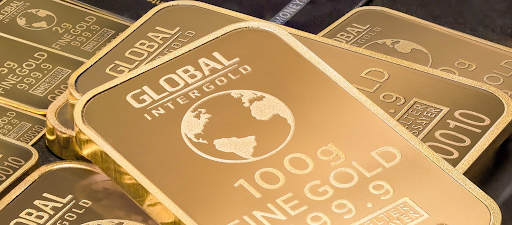
Gold: Investments and Intraday Trading
Gold and Global Macro
Since 1974, gold was considered only a commodity, but since 2019, it has regained its status as money. After the adoption of the Basel III agreement in March 2019, gold was granted the status of a first-tier banking asset. What does this mean? It means that gold in a bank’s assets is now considered as liquid as cash. Previously, gold was classified as a third-category reserve and was valued at only 50% of its worth on the bank’s balance sheet, which lowered its priority. Now, however, banks are rapidly increasing their gold holdings in their portfolios.
Such changes are aimed at global shifts in the structure of the capital market, and we can already observe these shifts.
Gold - Updating 5-Year High
Chart
Debt Market, Trump, and His Twitter
Amid falling bond interest rates in many countries, and in some cases, negative interest rates, capital is seeking opportunities to at least preserve its value. Adding fuel to the fire, along with market volatility, stress, and uncertainty, is Donald Trump, who relentlessly makes America “great again” through his Twitter account.
Gold Prices and Trump’s Tweets
Chart
How Much Does Gold Cost?
As of the end of August 2019, one troy ounce of gold on the spot market is priced at $1540, which means the price of 1 gram of gold is $1540/31.1 = $49.5. In rubles, this is 3305 rubles per gram, and in hryvnias, it’s 1240 UAH.
How to Invest in Gold
There are many ways to invest in gold for long-term investments and intraday speculation — CFDs on the spot market, futures, stocks of gold mining companies, specialized ETFs, coins, and mini-bars. Each method has its features. In this article, we will focus on gold ETFs that are traded on the American stock market.
Gold Exchange-Traded Funds
An alternative to futures and physical gold is investing in ETFs (sometimes referred to as index funds) that hold shares of gold mining companies. Due to their low costs and the absence of the need to "re-enter" (as often happens with futures due to their expiration features), ETFs have become the ideal choice for medium- and long-term investors in gold. They were created as a tool for investors who want to own physical gold, but don’t store it at home and avoid high storage costs. Management fees are generally less than half a percent. ETFs are, in fact, the most cost-effective, understandable, and convenient instrument for buying gold for the long term without leverage and holding it as an investment.
Chronology of Gold ETFs
ETFS Physical Gold: Instruments tied to physical gold appeared in 2003 and are currently widely available in the market. The first exchange-traded gold (ETG) were gold bars (now ETFS Physical Gold, but only in Australia), quoted on the Australian Stock Exchange (ticker GOLD). Today, it is also available on the London Stock Exchange (GBS in USD, GBSS in GBP), Euronext (GBS), Frankfurt Stock Exchange (GG9B), and the Italian Stock Exchange (GBS). These instruments were created by the initiative of the World Gold Council (WGC) in collaboration with Gold Bullion Securities Ltd. Currently, the fund holds 129.72 tons of gold.
SPDR Gold Tracks (GLD): In 2004, State Street Global Advisors launched an ETF on the New York Stock Exchange called Street Tracks Gold Shares, now SPDR Gold Tracks (GLD). Today, this product is also sold in Singapore, Tokyo, and Hong Kong. It is currently the most popular investment tool for indirect investments in gold. The fund owns more than 1127 tons of gold.
SPDR Gold Tracks (GLD) Chart
ETFS Physical Gold: ETF Securities Ltd created another gold-backed ETF called ETFS Physical Gold, available on the London Stock Exchange (PHAU in USD, PHGP in GBP), in Italy, Euronext (PHAU), and Frankfurt (VZLD).
New Gold Debentures: Another ETG is New Gold Debentures, traded in South Africa (GLD with 53.53 tons of gold) and Dubai Gold Securities, also in Dubai (GOLD with 0.16 tons of gold). The price of these ETGs can be somewhat confusing, as it may not match the spot price at first glance, but this is due to fees, which are paid by selling a small amount of gold for the security. For GLD, the gold must cover 98.03% of the ETF (97.9% for South African GLD), 97.77% for GBS and GOLD (99.7% for Dubai GOLD). The depository holding the gold is HSBC USA.
iShares COMEX Gold Trust: Another well-known ETF tied to physical gold is iShares COMEX Gold Trust, which determines its price based on futures contracts on the COMEX commodity exchange. It is traded on the New York Stock Exchange (IAU) and the Toronto Stock Exchange (IGT). The main principles regarding fees and gold coverage (98.09%) are similar to other ETGs. Currently, the fund holds 80.72 tons of gold, but even here, there are critical voices and doubts about the amount of gold covered by the securities. The depository is the Bank of Nova Scotia in Canada.
The ZKB Gold ETF (ZGLD) is traded on the Swiss Stock Exchange. A similar product, which invests solely in gold, was opened a year ago by Julius Baer’s Physical Gold Fund. It is also expressed in francs, dollars, and euros, quoted on the Swiss Stock Exchange, and holds more than 60 tons of gold.
Among investors, the Canadian ETFs Central Fund of Canada and Central Gold Trust, traded on the New York Stock Exchange (CEF) and the Toronto Stock Exchange, are very popular. Some experts consider these safer investments in gold compared to, for example, GLD or GBS.
Intraday Gold Trading
The quotes for gold ETFs fully replicate the price dynamics of gold on both the futures and spot markets. Therefore, there is not much difference in which tool is used to trade gold. The key issue is how to do it with minimal costs. We have already compared the costs of trading various instruments in the article “What Are Futures” and concluded that intraday trading of commodities via ETFs is quite profitable and has a number of advantages.
You can confirm this by trading on a demo account with platforms like Alpha Trader, RT, or Sterling Trader Pro. Test your strategy, compare the costs, and draw conclusions. However, if you want to buy gold for the long term, consider investment accounts.
